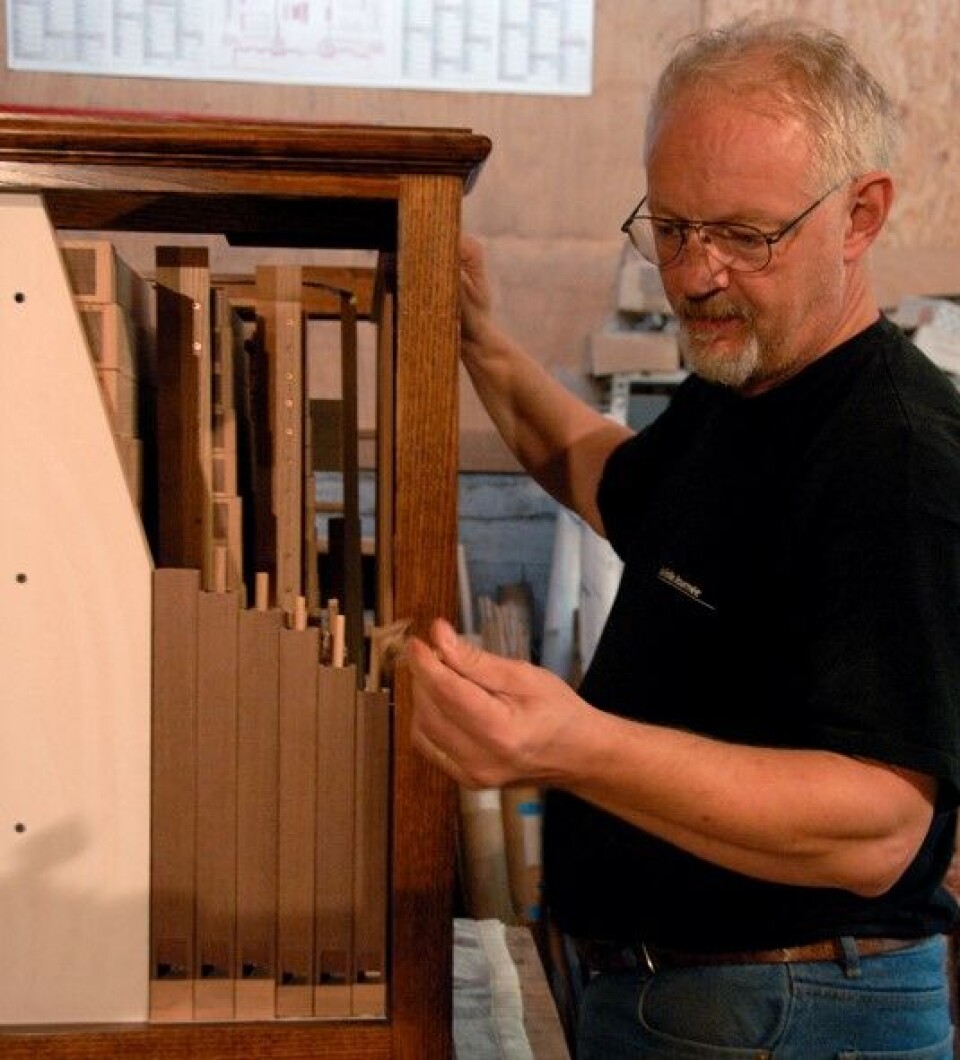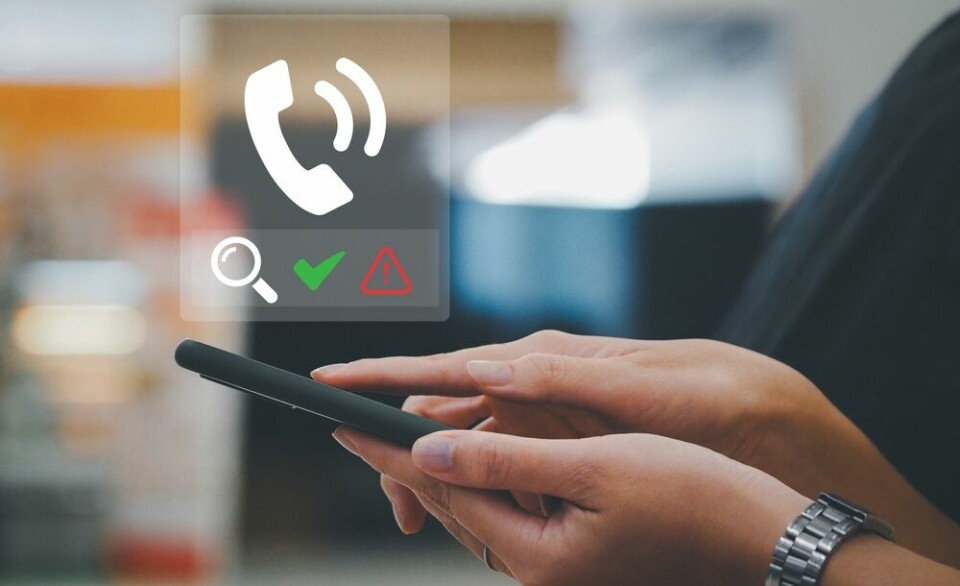-
Florent Pagny returns with new album and tour after cancer remission
Singer and The Voice star is back with 22nd album 'Grandeur Nature', following his lung cancer remission and vocal recovery
-
Discover the five most iconic French songs everyone loves
From Charles Aznavour to Edith Piaf – find out which tunes made the list
-
Discover Superbus: the French pop-rock sensation touring nationwide
Five-piece pop-rock band formed in 1999 and enjoyed a recent hit with a reworking of their song Lola
Meet the organ maker whose projects contain up to 500,000 parts
Etienne Fouss built his first organ at 24 and is one of around 40 makers in France who make instruments from start to finish

Organ building is a craft which requires numerous skills, as the maker must understand the complex mechanics of an organ, how to work with wood, metal, leather – and paper – as well as understanding the needs of musicians and how to produce the sound they want from their instrument.
How did you get started in the business?
I was brought up in Belgium and Germany and when I was young my first ambition was to leave school as soon as possible.
I had seen violin makers and tin plate makers at work and knew I wanted to make something with my hands. When I was 14, my mother found an advertisement from an organ maker in Brussels who was looking for an apprentice, and so it was purely by chance that I entered into this profession.
It is a job which is perfect for me, because it uses both your brain and your hands and is endlessly fascinating.
Why did you come to France?
After four years as an apprentice with Patrick Collon in Brussels, I had the idea to travel round different workshops in the way that the Compagnons du Devoir complete a Tour de France to learn all aspects of their trade before becoming a master craftsman.
I found my first position in the Gers and in the end I stayed in the southwest, working and learning my trade from different employers. I built my first organ when I was 24, and I set up my own business when I was 32. I have been in Périgueux, Dordogne, since 2003.
It takes years to master this profession, because you have to be a craftsman who not only knows and understands how to work with wood, but also use other materials; an engineer to understand the relationship between air, keys, pipes and sound; and an artist, to create something aesthetic; and an instrument which will play music.
What kind of organs do you build?
Because I am on my own, I cannot undertake the kind of large-scale organ you find in a big church. I make small ones, some of which can be transported, for use in concerts.

My clients are either professional or amateur musicians or conservatoires of music. They come from all over France and I also have international clients.
So if an organ is not only to be found in a church, what is the definition of an organ?
It has to have three elements. There has to be a pipe for each note, bellows and a keyboard. A harmonium is not an organ because there are no pipes. Bagpipes are not an organ because there is no keyboard.
They are very ancient instruments. It is thought the first one was invented by a Greek engineer, Ctesibius of Alexandria in the 3rd century BC.
It was called a hydraulis and the wind supply came from a water pressure system which was later replaced by bellows. We know they were used in Ancient Rome. There is a mosaic in Pompeii showing an organ. Originally they were not used for church music but for secular purposes.
What kind of music are your organs used for?
They are mainly used for baroque and medieval music, which is an area I am passionate about, and are often used to accompany musicians in ensembles in concerts. I have four organs I have made, which I hire out for music festivals and events all over the South West.
I am also the only person making portable, medieval organettos in France.
They are much smaller than portative organs and have a small keyboard, visible pipes on top and hand bellows. I have always enjoyed making them because they have been a real challenge.
There is no existing instrument dating from that period and so there are only contemporary drawings and engravings to work from, and so we can only surmise how they were made. I have drawn my inspiration from paintings by Memling and Van Eyck.
How do you set about making an organ?
First, you have to discuss what type of music a client wants to play and what kind of sound they wish to produce.
The material used to make the pipes affects the outcome. A softer wood will produce a softer tone, and a hard wood will make it more brilliant and sharper “I built my first organ when I was 24, and I set up my own business when I was 32. I have been in Périgueux since 2003 and the use of metal will change it again. You also have to take into account the size required, whether it is to be portable or not, and the final look.
Then it has to be designed on paper, before work can begin on it. Two-thirds of my organs are made of wood.
How many pieces do you have to make for one organ?
I started counting once, but gave up because there are so many.
A large cathedral organ will have at least 500,000 different parts. Smaller ones that I make will still have thousands. There are 56 keys. Each one has eight different elements, which each have to be made and each one has to be linked to a pipe, which may also be in several pieces.
It must be a massive puzzle putting it together?
When I was younger I was in one church where all the pieces for the organ I was working on were laid out and covered the whole area of the floor.
You really need to know what you are doing to be able to put the pieces together. Mine all have to fit into a small area and so the forward planning and design is vital. It is extraordinarily complex.
A piano is difficult enough, but an organ is in a field of its own. But it is exciting to figure it out and make it work.
Can you describe your workshop?
It is not very big, because the instruments I make are fairly small, but it is full of tools. There are so many different skills required in making an organ that I need several different ones.
I have made many of them myself, because it is impossible to buy readymade ones for some of the techniques I use. I also have some small machines, and a forge because I work with metal as well as wood.
How long does it take you to make one instrument?
Between one-and-a-half months and nine months, though it has taken me longer if the project has been particularly complex.
What have been your most satisfying projects?
One of the most complicated ones was for the Conservatoire at Roche-sur-Yon.
The organ is in two parts, one of which is fixed and the other can be removed and transported to be played as a separate instrument. It was a particular challenge to work it out.
I was also very happy with an organ I made for the Conservatoire at Versailles, which was also made in two parts with a separate box containing a different set of pipes placed on top. It has a particularly fine decoration with intricate latticework and it was painted by a specialist.
Is the decorative aspect important? Your organs are all very beautiful to look at.
I think organs should look beautiful to match the beauty of the music they play.
Are you a musician and is it important to be one to create a musical instrument?
I am an amateur singer and love performing baroque music. You do not have to be a musician to make an organ, but you have to have some understanding of music and sound to be able to produce what the client requires.
Related stories
Meet the Englishman whose litter selfie kick-started a new career
Meet the mountain rescuer who spent 30 years on the Pyrenees
























